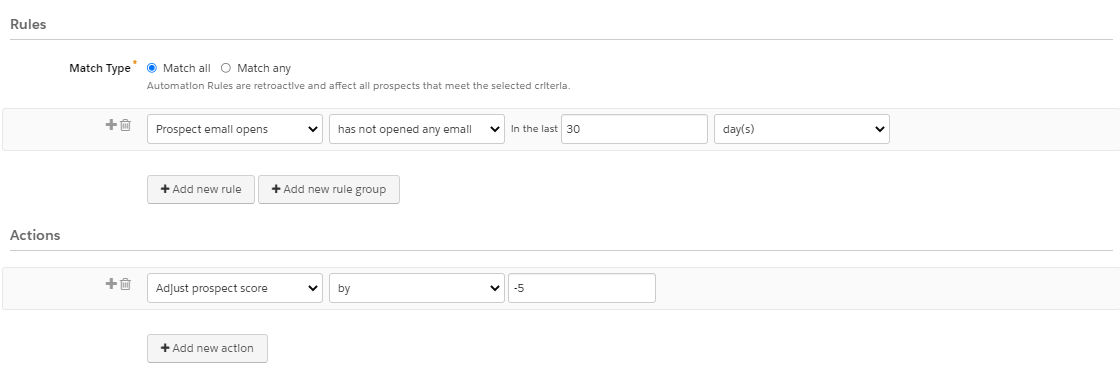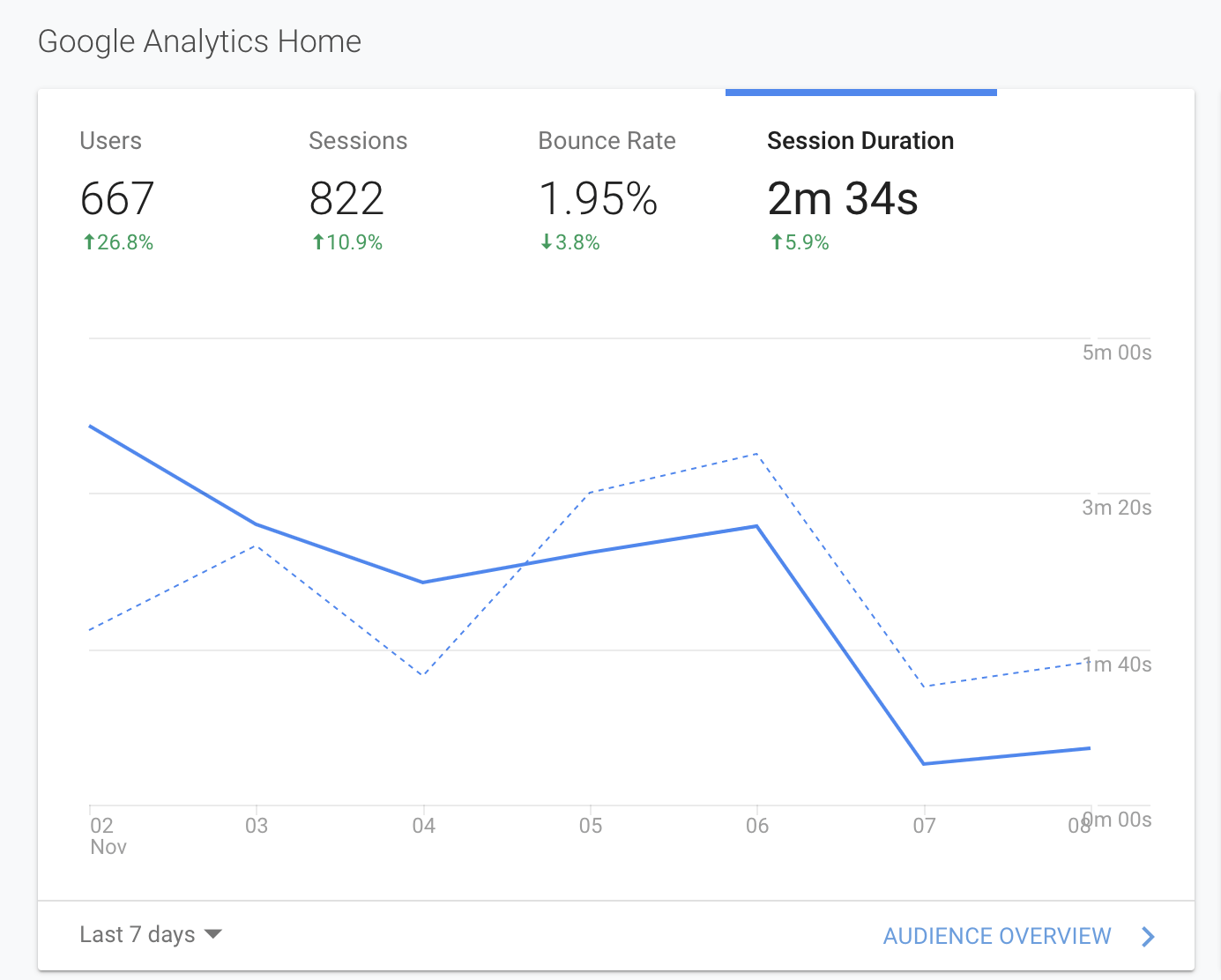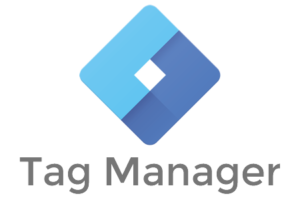You’ve heard it once; you’ll hear it again, but let’s be honest—personalization isn’t just a buzzword; it’s a game changer. In a world where every inbox and social media feed is overflowing with marketing messages, it’s no longer enough to share boilerplate content about member benefits or events. What truly matters is the ability to connect deeply with your audience.

Imagine the impact of delivering the right message to the right person at the perfect moment—it’s the key to forging meaningful relationships that resonate, and a standard practice for other businesses vying for your members’ attention. If you’re feeling lost about how to achieve this, don’t fret; you’re not alone in this journey. Together, we’ll explore the essential building blocks of personalized marketing, from understanding your audience to harnessing the power of real-time data. Let’s embark on this path toward marketing maturity and discover how to create connections that truly matter.
Why Personalization Matters
Put yourself in your members’ shoes for a minute and think about their inboxes. They’re inundated with messages from every direction—brands, associations, sponsors, and more. The challenge isn’t just to be seen; it’s to be relevant. That’s where personalized marketing shines.
At its core, personalization means tailoring your messages, campaigns, and opportunities to match your audience’s needs and preferences. It’s about going beyond a simple “Hello, [Name]!” to delivering content and solutions that resonate with what your members actually care about.
Organizations that embrace personalization are already seeing the benefits: better engagement, stronger member loyalty, and, ultimately, better outcomes for their goals.
 The Building Blocks of Personalized Marketing
The Building Blocks of Personalized Marketing
Before diving into advanced personalization, you need to establish a solid foundation. Here are the five essential building blocks to get started:
Personas
Personas bring your audience to life. Instead of “the customer,” you’re talking to “Mark, the young professional,” or “Kelly, the CEO member.” Built from real data—like behavior patterns, demographics, and preferences—personas help you craft messages that feel personal and authentic.
To create personas, tap into data sources like surveys, social media, and customer feedback. The more specific you can be, the more effective your campaigns will become.
Identifying the Problem
Once you know your audience, it’s time to focus on their pain points. What challenges are they facing, and how can your organization help? For example:
- If email engagement is low, segment your audience and personalize subject lines to reflect their interests.
- If member retention is a concern, highlight testimonials or unique benefits tailored to their needs.
The goal is to zero in on problems you can address with marketing campaigns.
Use Cases
A use case is a specific scenario where your campaign aims to drive success. For example:
- Onboarding New Members: Use an email series to introduce them to your offerings and keep them engaged.
- Boosting Retention: Send loyalty-focused messages or surveys inviting feedback from long-time members.
Each use case ties back to a business objective, ensuring your campaigns have a clear purpose and measurable impact.
Customer Journeys
Mapping out the customer journey means charting the path you want your audience to follow. Whether onboarding, event registration, or membership renewal, each journey includes defined stages and touchpoints.
Real-time data is critical here. By understanding your audience’s actions—like which emails they open or what content they download—you can adapt their journey in real time, ensuring every step feels relevant.

KPIs
Finally, you need key performance indicators (KPIs) to measure success. Whether it’s tracking conversion rates, engagement levels, or satisfaction scores, KPIs provide the benchmarks you need to refine and improve your campaigns over time.
The Role of Data in Personalization
 Clean, actionable, and unstructured data is the lifeblood of personalized marketing. Here’s why it matters:
Clean, actionable, and unstructured data is the lifeblood of personalized marketing. Here’s why it matters:
- Clean Data: Duplicate or inconsistent data skews your insights and can lead to misdirected campaigns. Consistency is key—whether you’re personalizing based on location or interests.
- Actionable Data: Information like member preferences and engagement history informs your messages, making them more relevant.
- Unstructured Data: Feedback from surveys or social media can reveal hidden trends, giving you fresh opportunities to engage your audience.
While perfect data may be a myth, striving for accuracy and consistency will elevate your personalization efforts.
Charting Your Path to Digital Marketing Maturity
Achieving personalization isn’t an overnight transformation—it’s a journey. Organizations progress through stages of digital marketing maturity:
- Basic Marketing: One-size-fits-all campaigns with limited segmentation.
- Segmentation and Targeting: Dividing your audience into groups and sending more relevant messages.
- Automation: Setting up automated workflows like welcome series or event reminders.
- Real-Time Personalization: Responding to user behaviors dynamically.
- AI-Driven Personalization: Leveraging predictive AI to anticipate and meet audience needs.
Wherever you fall on this spectrum, the key is to take incremental steps. Start with small wins, like automating a single campaign or refining your segmentation strategy, and build from there. Monitor your KPIs, adjust based on what works, and keep leveling up.
Takeaways for Success
 Personalized marketing isn’t just about technology—it’s about understanding your audience and delivering value. By building a foundation with personas, identifying problems, creating use cases, mapping customer journeys, and tracking KPIs, you’ll be well on your way to marketing that resonates.
Personalized marketing isn’t just about technology—it’s about understanding your audience and delivering value. By building a foundation with personas, identifying problems, creating use cases, mapping customer journeys, and tracking KPIs, you’ll be well on your way to marketing that resonates.
And remember, personalization isn’t a destination; it’s a continuous process. So embrace the journey, keep experimenting, and enjoy the impact of connecting with your audience. After all, there’s no better way to stand out in a crowded inbox than by making every message count.




 Plain and simple, security is a non-negotiable. Any tech proposal should clearly outline how the technology will protect data and support security initiatives, particularly for customer-facing systems. Sanchez calls security “table stakes,” noting that it’s a must-have, especially with the rise in cyber threats. Additionally, ensure that the technology can grow with the organization’s evolving needs. “Does it grow with the business?” asks Yimam, who emphasized the need for adaptable, scalable tools.
Plain and simple, security is a non-negotiable. Any tech proposal should clearly outline how the technology will protect data and support security initiatives, particularly for customer-facing systems. Sanchez calls security “table stakes,” noting that it’s a must-have, especially with the rise in cyber threats. Additionally, ensure that the technology can grow with the organization’s evolving needs. “Does it grow with the business?” asks Yimam, who emphasized the need for adaptable, scalable tools. Tie your proposal to the organization’s goals and mission. A goal-setting framework like OKRs (Objectives and Key Results) can help you demonstrate how the new technology will drive mission-critical outcomes. Sanchez highlighted the importance of this alignment, explaining that OKRs are invaluable in linking tech investments to concrete, mission-driven results.
Tie your proposal to the organization’s goals and mission. A goal-setting framework like OKRs (Objectives and Key Results) can help you demonstrate how the new technology will drive mission-critical outcomes. Sanchez highlighted the importance of this alignment, explaining that OKRs are invaluable in linking tech investments to concrete, mission-driven results. You can’t, and shouldn’t, do all of the work yourself.
You can’t, and shouldn’t, do all of the work yourself. 



 By automating your membership campaigns, you can scale your outreach efforts, engage prospects more effectively, and create a seamless experience for new and existing members. Consider automated journeys as a personalized roadmap that nurtures leads and converts them into active members/donors, enhancing your organization’s growth.
By automating your membership campaigns, you can scale your outreach efforts, engage prospects more effectively, and create a seamless experience for new and existing members. Consider automated journeys as a personalized roadmap that nurtures leads and converts them into active members/donors, enhancing your organization’s growth. Enhance your upcoming event registration process by streamlining promotion, personalizing communication, simplifying registration, and ensuring timely follow-ups. By leveraging automation, it will handle everything from initial event promotion to post-event follow-ups, providing a seamless experience for registrants and organizers alike.
Enhance your upcoming event registration process by streamlining promotion, personalizing communication, simplifying registration, and ensuring timely follow-ups. By leveraging automation, it will handle everything from initial event promotion to post-event follow-ups, providing a seamless experience for registrants and organizers alike.  One of the biggest things for sponsors is getting that personalized experience with associations. You can create tailored workflows to attract, engage, and retain sponsors for your events and initiatives. Embracing automation improves operational efficiency and helps build stronger relationships with sponsors, ultimately driving success in securing and managing that non-dues revenue channel.
One of the biggest things for sponsors is getting that personalized experience with associations. You can create tailored workflows to attract, engage, and retain sponsors for your events and initiatives. Embracing automation improves operational efficiency and helps build stronger relationships with sponsors, ultimately driving success in securing and managing that non-dues revenue channel. 

 Confidentiality, availability, and integrity of information are used to describe data security. It’s all about the policies and procedures businesses put in place to safeguard personal data against unauthorized access, data breaches, cyberattacks, and unintentional or deliberate data loss. Data security guarantees that data is accurate and trustworthy and that only authorized people can access it. Resilient data storage technologies, encryption solutions, data erasure, data masking, physical and logical access controls, breach response, and multi-factor authentication are all part of a data security plan.
Confidentiality, availability, and integrity of information are used to describe data security. It’s all about the policies and procedures businesses put in place to safeguard personal data against unauthorized access, data breaches, cyberattacks, and unintentional or deliberate data loss. Data security guarantees that data is accurate and trustworthy and that only authorized people can access it. Resilient data storage technologies, encryption solutions, data erasure, data masking, physical and logical access controls, breach response, and multi-factor authentication are all part of a data security plan. Although enterprise data security may be effective and reliable, the techniques used to collect, store, and share that data may be in violation of the privacy policy.
Although enterprise data security may be effective and reliable, the techniques used to collect, store, and share that data may be in violation of the privacy policy. Concerns about personal information and sensitive data and their loss can result in company disruption, considerable reputational harm, and regulatory fines. By implementing effective security measures and adhering to the accompanying privacy standards, businesses can avoid unplanned business interruptions.
Concerns about personal information and sensitive data and their loss can result in company disruption, considerable reputational harm, and regulatory fines. By implementing effective security measures and adhering to the accompanying privacy standards, businesses can avoid unplanned business interruptions.








 Your legacy marketing system holds a wealth of information about how your members and prospects have interacted with your organization in the past. At the most basic level you know which contacts are subscribed or unsubscribed from receiving your emails. At a deeper level, you may know who opens up emails related to events versus educational opportunities. This behavioral information can be aggregated and added to the new system so you do not have to start from scratch.
Your legacy marketing system holds a wealth of information about how your members and prospects have interacted with your organization in the past. At the most basic level you know which contacts are subscribed or unsubscribed from receiving your emails. At a deeper level, you may know who opens up emails related to events versus educational opportunities. This behavioral information can be aggregated and added to the new system so you do not have to start from scratch.

 If you have ever worked with me on a marketing automation implementation, you probably heard me say, “I am not your association’s lawyer, but my understanding of CAN-SPAM is…” I started using this line after being asked by multiple clients what they should do, which prompted Becky Breeden, our Director of Digital Strategy, to remind me that I am indeed not a lawyer. (I was the classic STEM, not liberal arts, student.) Legal compliance is not my wheelhouse, but I do engage with clients on how to implement email preferences based on their understanding of the laws.
If you have ever worked with me on a marketing automation implementation, you probably heard me say, “I am not your association’s lawyer, but my understanding of CAN-SPAM is…” I started using this line after being asked by multiple clients what they should do, which prompted Becky Breeden, our Director of Digital Strategy, to remind me that I am indeed not a lawyer. (I was the classic STEM, not liberal arts, student.) Legal compliance is not my wheelhouse, but I do engage with clients on how to implement email preferences based on their understanding of the laws. One key way to limit the number of unsubscribe alls is to include a link to manage email preferences. By using these email preferences you are then able to create segmented lists so you are delivering relevant content to your members. When members see that you tailor content based on their preferences, then they are more likely to be engaged and stay subscribed to your email marketing efforts. There are plenty of useful statistics out there related to ROI on segmentation, but the gist is that segmentation is extremely important, and self-selected email preferences is data directly from your member.
One key way to limit the number of unsubscribe alls is to include a link to manage email preferences. By using these email preferences you are then able to create segmented lists so you are delivering relevant content to your members. When members see that you tailor content based on their preferences, then they are more likely to be engaged and stay subscribed to your email marketing efforts. There are plenty of useful statistics out there related to ROI on segmentation, but the gist is that segmentation is extremely important, and self-selected email preferences is data directly from your member.
 On February 4, 2020, Google Chrome is changing the security around the use of third-party cookies. First of all, what are third-party cookies? A cookie is considered third-party if it has a different domain from the main website. For example, if the domain is “fusionSpan.com” and Pardot (a marketing automation tool) is using a cookie to track website visits, that cookie would be considered a third-party cookie since it was set by Pardot, a “third-party.” Third-party cookies may also be stored as a result of a user’s interaction with chatbots, buttons, forms, etc.
On February 4, 2020, Google Chrome is changing the security around the use of third-party cookies. First of all, what are third-party cookies? A cookie is considered third-party if it has a different domain from the main website. For example, if the domain is “fusionSpan.com” and Pardot (a marketing automation tool) is using a cookie to track website visits, that cookie would be considered a third-party cookie since it was set by Pardot, a “third-party.” Third-party cookies may also be stored as a result of a user’s interaction with chatbots, buttons, forms, etc.


 Is your organization’s website performance aligned with your business goals? Without properly leveraging your website’s data, it is difficult to know how you can improve your web presence and improve your users’ experience. We recommend using Google Analytics, a powerful free web analytics service, to track and report your website traffic.
Is your organization’s website performance aligned with your business goals? Without properly leveraging your website’s data, it is difficult to know how you can improve your web presence and improve your users’ experience. We recommend using Google Analytics, a powerful free web analytics service, to track and report your website traffic.
 Scanning a list of the
Scanning a list of the 
 Dear Betty: The ALS Ice Bucket Challenge has raised over $100 MILLION to date for the ALS Association. Why didn’t we think of that?!? I know we can’t just copy it outright, but is there anything associations can learn from the phenomenal success of this viral campaign?
Dear Betty: The ALS Ice Bucket Challenge has raised over $100 MILLION to date for the ALS Association. Why didn’t we think of that?!? I know we can’t just copy it outright, but is there anything associations can learn from the phenomenal success of this viral campaign?
 Gentle Reader:
Gentle Reader: Dear Betty: Fall always makes me think of back to school, school supplies, and learning new things. What do I need to add to my marketing backpack for success this fall?
Dear Betty: Fall always makes me think of back to school, school supplies, and learning new things. What do I need to add to my marketing backpack for success this fall?


 The
The  Dear Betty:
Dear Betty: I wanted to bring back a popular topic that all associations, not only small staff ones, face. We originally addressed it
I wanted to bring back a popular topic that all associations, not only small staff ones, face. We originally addressed it  Dear Betty,
Dear Betty,
 Sure you’ve heard of it, but what exactly is a press release? What is its purpose and how do you write one? How do you go about distributing this document once it’s been written? These questions are all going to be answered over the course of my next few posts.
Sure you’ve heard of it, but what exactly is a press release? What is its purpose and how do you write one? How do you go about distributing this document once it’s been written? These questions are all going to be answered over the course of my next few posts.
 Dear Betty:
Dear Betty:

 Communication skills are important to all aspects of life, including work. It doesn’t matter if your expertise is in political science, economics or journalism – everyone needs to be able to communicate. This means anyone within your organization can be tapped to work on your organization’s social media campaign.
Communication skills are important to all aspects of life, including work. It doesn’t matter if your expertise is in political science, economics or journalism – everyone needs to be able to communicate. This means anyone within your organization can be tapped to work on your organization’s social media campaign.






 We are a 109-year-old organization and, while our members are not quite THAT old, they are aging and, as a result, our membership growth has stagnated. With the renewed interest in genealogy due to some recent popular television shows, we think we have an opportunity to reach out to a younger, more tech-savvy crowd. How do we get them to visit our website and maybe even join?
We are a 109-year-old organization and, while our members are not quite THAT old, they are aging and, as a result, our membership growth has stagnated. With the renewed interest in genealogy due to some recent popular television shows, we think we have an opportunity to reach out to a younger, more tech-savvy crowd. How do we get them to visit our website and maybe even join?


